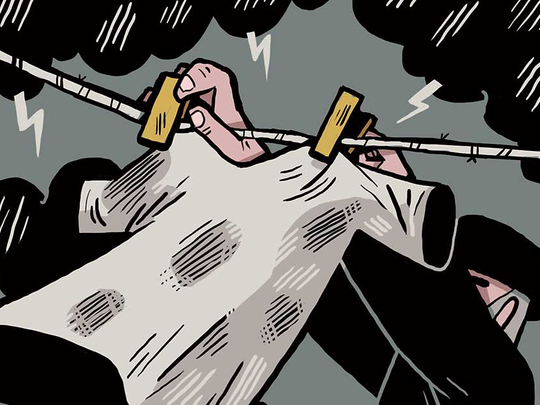
In recent Congressional testimony, United States Secretary of State Rex Tillerson sensibly stressed that the US should “work towards support of those elements inside of Iran that would lead to a peaceful transition of that government”. The commentariat was aghast, and the Islamic republic registered a formal protest note. Both parties seemed surprised that the US has long assisted those seeking democratic change. During the Cold War, secretaries of state routinely assured those trapped behind the Iron Curtain that America supported their aspirations. Given that Iran is ruled by an ageing Supreme Leader, Ayatollah Ali Khamenei, the US should be prepared for a transition of power there that may yet precipitate the collapse of the entire system.
Iran is often mischaracterised as an island of stability. The history of the Islamic republic, however, is a turbulent one, featuring a constant struggle between an authoritarian regime and restive population seeking empowerment. When they first assumed power, the clerical oligarchs waged bloody street battles to repress other members of the revolutionary coalition who did not share their desire for a theocratic dictatorship.
In the 1990s, they faced the rise of a reform movement that remains the most exhilarating attempt to harmonise religion and pluralism. The reformists spoke about reconsidering Khamenei’s absolutist pretensions and expanding civil society and critical media. The regime reacted with its usual mixture of terror and intimidation to eviscerate the movement. And then came the Green Revolt in the summer of 2009 that forever delegitimised the system and severed the bonds between state and society.
The one thing certain about Iran’s future is that another protest movement will rise at some point seeking to displace the regime.
Today, the Islamic republic lumbers on as the Soviet Union did during its last years. It professes an ideology that convinces no one. It commands security services that proved unreliable in the 2009 rebellion, causing the regime to deploy the Basij militias because many commanders of the Revolutionary Guards refused to shoot the protesters.
The seminaries in the shrine city of Qom appreciate the damage that has been done as the mosques remain empty even during important religious commemorations. Young men don’t wish to join the clergy, and women don’t want to marry clerics. The system is engulfed by corruption, which is particularly problematic for a regime that bases its power on divine ordinance. And Iran just underwent a presidential election where the winner, Hassan Rouhani, promised freedoms he has no intention of delivering and further delegitimised the government by airing its dirty laundry on issues of craft and repression. Today, the Islamic republic will not be able to manage a succession to the post of the supreme leader as its factions are too divided and its public too disaffected.
The regime does, however, have one thing in its favour: Its nuclear agreement with the international community (officially known as the Joint Comprehensive Plan of Action, or JCPOA.) Historically, arms-control treaties have generated their own constituency. During the 1970s, at the height of US-Soviet arms-control diplomacy, influential voices in the West did not want to pressure the Kremlin for fear that it would disrupt the agreements. The Islamic republic can count on similar forbearance from critical sectors of Washington. Many will feign concern about Iran’s terrorism or human rights abuses, but might rebuff attempts to impose truly crippling sanctions on Tehran. The legitimacy and longevity of the regime will not be questioned by those whose foremost priority is sustaining a deficient arms-control accord. And it was this sentiment that Tillerson challenged when he called for making common cause with those struggling for freedom inside Iran. The amorality of arms control has little room for such lofty and idealistic ambitions.
The task of a judicious US government today is to plan for the probable outbreak of another protest movement or the sudden passing of Khamenei that could destabilise the system to the point of collapse. How can the West further sow discord in Iran’s vicious factional politics? How can the US weaken the regime’s already unsteady security services? This will require empowering its domestic critics. The planning for all this must start today; once the crisis breaks out, it will be too late for America to be a player.
In March 1953, when Joseph Stalin died, the then US president Dwight Eisenhower had asked to see his government’s studies about how to exploit the Soviet succession crisis. There were none. An exasperated Eisenhower exclaimed, “For about seven years, ever since 1946, I know that everybody who should have been concerned with such things has been sounding off on what we should do when Stalin dies ... Well he did — and we want to see what bright ideas were in the files of this government, what plans were laid. What we found was that the result of seven years of yapping is exactly zero. We have no plan.” For his part, Tillerson has established the guidepost that should direct US foreign policy. The task for the administration now is to study ways that it can take advantage of Iran’s looming crisis.
— Washington Post
Ray Takeyh is a senior fellow at the Council on Foreign Relations.









